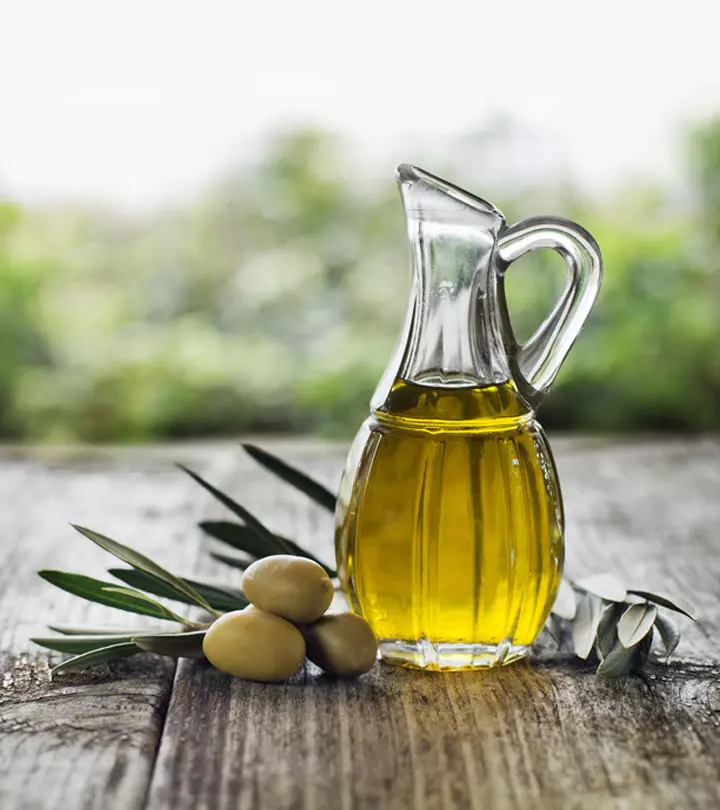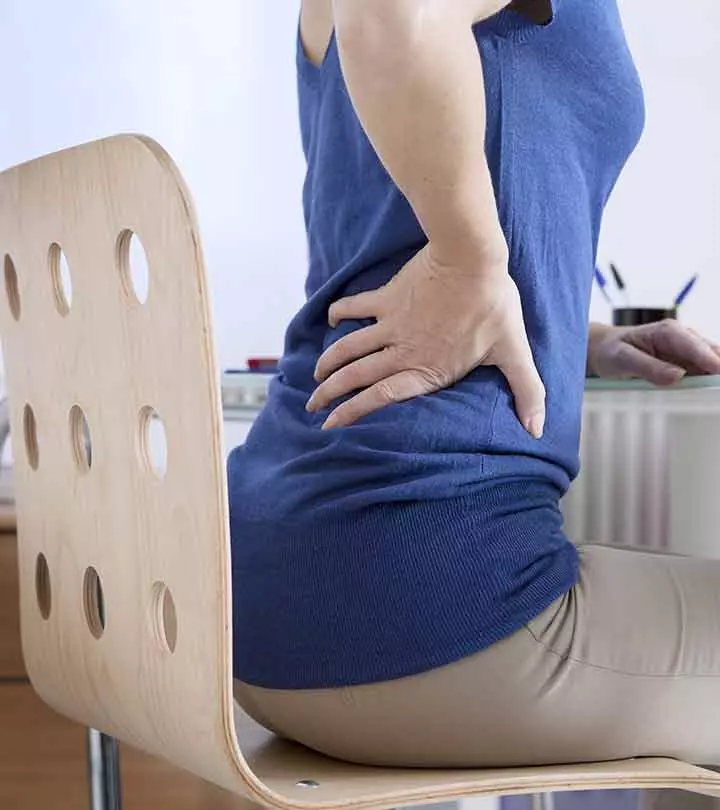How To Get Rid Of Head Lice Living On Pillows And Sheets
Forget about those pricey cleaners – just gather some basic supplies, and you are good to go!

Image: Shutterstock
A head lice infestation can affect the entire family if not caught early. It is also possible that these parasites spread to your towels, hats, pillows, and you will particularly need to get rid of lice on bedding. The infestation makes your scalp itch, and children are the ones most at risk.
Keeping your home lice-free requires proper disinfection. If you want to prevent head lice from taking up residence in your bedding, you might want to try these tips from this article. Keep reading to learn more.
In This Article
What Are Head Lice?
Head lice are tiny insects that live in the hair and survive by ingesting blood from the scalp. Since they are wingless, lice cannot fly or hop to infect others. They can crawl and spread only when combs, hats, or other accessories are shared between an infected and non-infected person.
Let us now explore whether these insects can survive on your pillows and sheets.
Key Takeaways
- Lice infestation can spread from one person to another if not treated early.
- Although lice cannot fly, they can crawl through towels, bedsheets, common linen, comb, and hair to hair contact from one head to another.
- Washing your bed linen, combs, and accessories daily in hot water while using homemade anti-lice sprays can help control the infestation.
Can Head Lice Live On Pillows?
Yes. But it is not likely for head lice to live in bedding for very long. As lice need scalp blood and warmth to stay alive, they do not survive long on any non-living surface like pillows and beddings for more than 24 hours (1).
Head lice may crawl from one persons head to another through hair-to-hair contact or sharing combs, towels, and hats. Keep reading to learn more about the transmission.
Transmission Risks
Head-To-Head Contact:
- Lice spreads easily through direct contact, such as hugging, playing, or other physically close interactions.
- Children are especially at risk during group activities or sports.
Shared Items:
- Lice can transfer when combs, brushes, or hair accessories are shared with a person with a lice infestation.
- Using hats, helmets, or scarves previously worn by someone with lice allows the pests to spread.
- Sharing towels, coats, or shirts can facilitate lice transmission, especially if these items touch the hair or scalp.
Bedding And Fabrics:
- Lice can move from an individual’s hair onto pillows and sheets, where they can survive for a short time and transfer to others. Regular washing and drying of bedding and fabrics at high temperatures can help eliminate lice and their eggs.
- Sharing bedding or blankets increases the risk of lice spreading within households or shared sleeping spaces.
Although it is a relief that bedding and pillows cannot spread head lice, they still need to be cleaned. The following section lists some useful tips to get rid of lice on your bed.
How To Get Rid Of Lice On Bedding
The most common way to clean your bedding is to leave it for a day. The insects will die on their own without food and warmth. Here’s what you need to do to get rid of head lice on your pillows and mattresses:
- Strip all the bed items – pillow covers, bed linens, and blankets.
- Machine wash the linens with hot water. Even a hot clothes dryer can disinfect your beddings and pillows.
- Isolate the things that cannot be washed in plastic bags for at least a week.
- Lay the infested items under sunlight for a few days.
- Vacuum over the bedding to get rid of any leftover lice.
- Use a hot steam cleaner on bedding and upholstery and ideally follow up with a lice-prevention spray after cleaning.
 Pro Tip
Pro TipIf you feel treating lice on pillows and bedding with hot water or a hot dryer is not enough to kill the pests completely, try these methods instead.
What To Do If You Are Still Worried About Lice
1. Eliminate Lice From The Source
To stop the recurrence of lice infestation on your bedding, remove them from the source your head. You can try over-the-counter medicated creams and shampoos to remove lice from your hair. There are also many oils for head lice prevention such as peppermint, lavender, and neem oils. Apply them to your hair and use a nit comb while brushing your hair to eliminate any dead lice and nits. If these head lice treatments do not work, consult a dermatologist for a better solution.
A mother and a blogger describe her experience of how she managed lice infestation. She discusses her home treatment steps that worked to get rid of traces of lice. She states, “I wore a headlamp so I could see close to the scalp as I did this, kept a water spray bottle close to keep hair wet as I went, used clips to keep sections of hair separated, and had a comb as my guide to move hair about and closely inspect the scalp (i).”
2. Homemade Bedding Sprays
If you feel that thoroughly cleaning the beddings or vacuuming is not enough to get rid of the lice, you can try a few lice bedding sprays to be safe. Here are two recipes that can help:
(a) DIY Bleach Lice Spray
You Will Need
- 1 tablespoon of bleach
- 1 cup of water
- Spray bottle
Directions
- Mix the bleach and water in the spray bottle.
- Spray this solution on your bedding, blankets, and pillow covers.
- Wait until the solution dries and wash the bedding in hot water.
(b) DIY Tea Tree Oil Spray
If you do not want to use bleach due to its corrosive nature and strong smell, add tea tree oil to your spray.
You Will Need
- 10 drops of tea tree oil
- 1 cup of water
- Spray bottle
Directions
- Mix the tea tree oil and water in the spray bottle.
- Spray this solution generously over your bedding.
- Let it dry and wash or vacuum the bedding.
Although you can get rid of head lice infestations painlessly, the best thing is to act before getting infected. If you have been in close contact with an infected person, take the steps mentioned below to prevent getting infected yourself.
Steps You Can Take To Prevent Lice Infestation
- Avoid head contact, i.e., do not bump your head into an infected person.
- Do not use the same brushes, hats, towels, or other hair accessories as the infected person.
- Wash all your hair accessories in hot water to prevent the spread of lice. The CDC recommends a water temperature of at least 130°F to kill lice (2).
 Pro Tip
Pro TipConclusion
Head lice infestation is a frustrating affair. In severe cases, you may find lice on your bedding, pillows, linens, and mattresses as well. However, they cannot survive for longer than a day.
These parasites make your scalp itch and spread quickly. Thus, if you or your close one has a lice infestation, you need to act quickly to get rid of them. Make sure you wash your clothes and personal belongings thoroughly and isolate the things that cannot be washed. Use OTC creams, medicated shampoos, and oils to eliminate lice from your household items.
Frequently Asked Questions
Do you have to wash sheets every day with lice?
Yes. Wash the sheets daily until you are sure you are lice-free.
Can lice live on couches?
No, just as with the pillowcases and bedding, lice cannot live on couches for more than 24-48 hours as they need blood to survive.
How long does it take to realize you have lice?
It may take 1-2 weeks to realize you have lice. Although lice make the scalp itchy, it can be mistaken for other scalp issues.
What smell do lice hate?
There is currently no scientific evidence that can suggest or help determine if lice hate a specific smell. However, anecdotal evidence suggests that essential oils such as lavender, peppermint, and eucalyptus may help repel lice but aren’t strong enough to kill them.
Is mayonnaise effective for treating head lice?
Mayonnaise is a popular home remedy used to treat head lice. Research suggests that using a combination of mayonnaise and hair shampoo may help get rid of head lice in 8 days as the heavy coating may block lice growth (3). However, more research is needed to further understand the effect of using mayonnaise to treat head lice.
Learn effective and thorough techniques for cleaning your home post-lice infestation in this comprehensive video guide. From washing bedding and vacuuming to disinfecting personal items, this video offers step-by-step instructions to ensure preventing their return.
References
Articles on StyleCraze are backed by verified information from peer-reviewed and academic research papers, reputed organizations, research institutions, and medical associations to ensure accuracy and relevance. Read our editorial policy to learn more.
- Head Lice Infestations: The Agent
https://www.ncbi.nlm.nih.gov/pmc/articles/PMC2724133/ - Treatment of Head Lice
https://www.cdc.gov/lice/treatment/index.html#: - Comparative Study of Efficacy of Using Mayonnaise and Hair Shampoo in the Control of Head Lice among Elementary School Students
https://pubs.sciepub.com/ajnr/6/6/12/index.html
(i) Head Lice Advice
https://realisticidealist.blogspot.com/2013/09/head-lice-advice.html
Read full bio of Tiffany Young
Read full bio of Arshiya Syeda
Read full bio of Anjali Sayee
Read full bio of Swathi E


























Community Experiences
Join the conversation and become a part of our empowering community! Share your stories, experiences, and insights to connect with other beauty, lifestyle, and health enthusiasts.